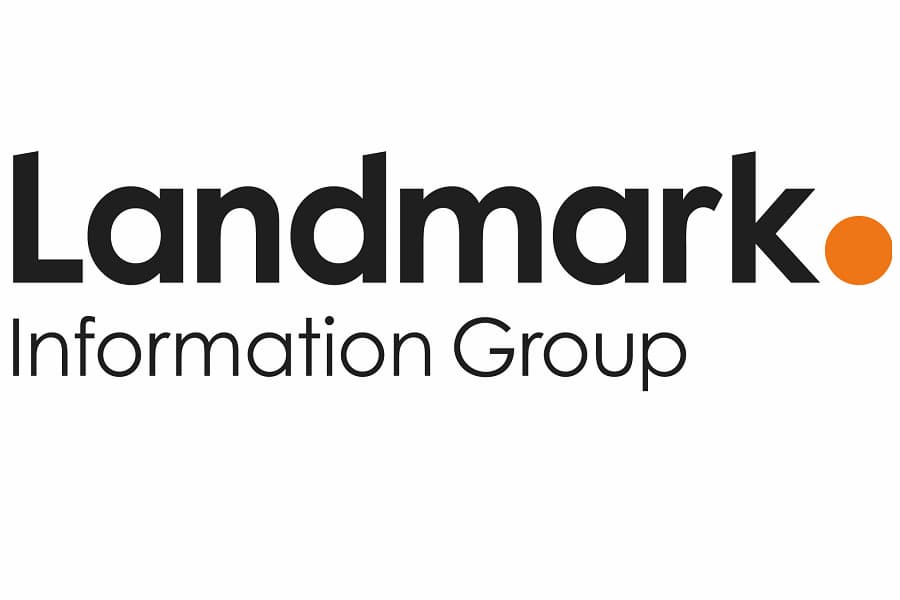Upcoming tax changes may lead more private property investors to incorporate. Susan Winter and Tony Lake look at the pros and cons of each structure, and what conveyancers need to know when acting for a corporate client as a property investor
Susan Winter is senior tax consultant at Armstrong Watson. Tony Lake is commercial property partner at Burnetts Solicitors.
In recent years, there has been an undoubted shift in the government’s thinking on purchasing properties, especially when bought for investment purposes. The Chancellor has introduced a raft of changes aimed at the individual property investor, including the restriction of tax relief on loan interest from April 2017. This has led many investors to look for ways in which they can continue to qualify for interest relief, and this has meant many have looked at establishing corporate entities.
This article will look at the pros and cons of holding property personally and holding it in a limited company, and what conveyancers need to be aware of when acting for a corporate client as opposed to a private client.
Tax implications – Taxing the profits
The first and most obvious difference between the corporate entity and the individual is the rate they will pay on the rental income received. For an individual, the rate can be up to 45 per cent, whereas for a company, the corporate rate is currently set at 20 per cent, and will be falling to just 17 per cent from April 2020. This is, of course, excellent news for the investor who wishes to reinvest the net of tax profits into further property purchases or improvements. However, the picture is less clear when the investor needs to extract the funds from the company, because this can generally be done in only one of two ways: salary or dividend.
If the income is withdrawn as salary, then it will be subject to PAYE, which may mean that the investor would face a 45 per cent charge, plus employers national insurance. If the investor runs the property business with others, perhaps a spouse or civil partner, they could each use their personal allowances to extract the income over time.
Dividends provide an alternative way to draw the funds from a company, but even here, the rules have changed somewhat. The Chancellor introduced a new dividend tax regime, from April 2016, which resulted in the first £5,000 of dividend income being tax-free, but thereafter taxed at 7.5 per cent to the extent that it falls within the basic rate tax band, 32.5 per cent to the extent it falls within the higher rate tax band, and the tax is 38.1 per cent if the dividend falls above the additional rate threshold of £150,000. While this is below the current rates of income tax under PAYE, there is still the tax on the extraction of the capital value of the company back to the investor to consider. This would normally be via a liquidation of some sort, the proceeds of which would be subject to capital gains tax (CGT).
It is also worth noting that a company can be useful to any investor with income above £100,000. Such investors would start to lose their personal allowance at the rate of £1 for every £2 of income over the threshold, but if the property business is run as a company, the investor can stream the income to themselves to avoid exceeding the income threshold, so their personal allowance can be maintained; the individual investor is taxed on the rents as they arise, so has less control over this.
In general, running a property business through a company will give an annual tax saving. When considering the retained profits position for a sole trader property investor against a corporate property investor where the rental profits are £80,000 – the tax saving would be £1,468 per annum.
However, the value of the saving varies according to the level of rental profits of the business, and it is always advisable to crunch the numbers, as the result is not always as expected.
The table [below] highlights how the pendulum swings against the use of a company as the profits increase, assuming all ‘net of tax’ profits are extracted via dividend. If, however, not all the profits are required to be extracted from the company, then the corporate vehicle will remain advantageous.
| Profits retained: sole trader v. company | ||
| Rental profits | Sole trader profits retained | Company profits retained |
| £15,000 | £13,430 | £13,612 |
| £40,000 | £31,170 | £32,219 |
| £80,000 | £54,770 | £56,238 |
| £160,000 | £96,270 | £94,85 |
Tax treatment of mortgage interest
As mentioned in the opening paragraphs, mortgage interest will no longer be an allowable expense for individual property investors – this change will be phased in between April 2017 and April 2020. Instead, they will only be able to offset a basic rate deduction from their tax liability. Companies, on the other hand, will continue to be able to deduct mortgage interest as a relievable expense of the business.
For example, if an investor has a property worth £200,000 with a mortgage of £150,000,and is receiving rents of £800 per month and paying mortgage interest of £500 per month, under existing rules, they will be taxed on profits of £3,600 per tax year.
By 2020, the investor will be taxed on the full profit of £9,600, and will receive a deduction from their tax liability of 20 per cent of the mortgage interest. In this example, that equates to a deduction from your tax bill of £1,200.
For a basic rate taxpayer, the higher level of income could push them into paying 40 per cent tax; for a higher rate taxpayer, the tax cost will increase by £1,200 in this example. There is also the knock-on effects that the increased income may have for thresholds, such as tax credits and child benefit. Corporate investors, on the other hand, will continue to be able to deduct their full amount of mortgage interest when calculating their profits chargeable to corporation tax.
Barriers to incorporating the property business
Investing through a company can seem quite attractive: the profit is computed to give a lower figure after deduction of mortgage interest, and the tax rates charged on those profits are lower. Investors buying new properties may therefore set up a new company to purchase the property, but what about the existing property portfolio? Landlords transferring their existing portfolio of buy-to-let properties into the new company will need to consider carefully the impact of stamp duty land tax (SDLT) and CGT.
CGT
The transfer of property to the company will be treated as a disposal at full market value for CGT purposes. This will be the case whether the property is sold to the company or gifted. There may be capital losses available to offset against the gain, or it may be possible to utilise incorporation relief under the provisions of section 162 of the Taxation of Chargeable Gains Act 1992.
The entire business must be transferred to the company for the relief to apply. The relief works by holding over the gain on each chargeable asset against the value of the shares issued in return. The gain does not therefore become chargeable until such time as the shares are disposed of.
Eligibility for incorporation relief is not automatic, and will only apply if what is being transferred is an actual ‘business’. To qualify as a business, there must be substantial activity on the investor’s part in running the business – for example, the collection of rents, advertising for and vetting tenants, co-ordinating repairs and checking properties. The investor’s role in the business must be shown to be active, and if they merely delegate all matters to a letting agent, this would be difficult to argue.
SDLT
SDLT will be due on the value of properties that are transferred to a company that is connected to the investor. The charge is based on the full market value of the properties, and as of April 2016, the increased rates will apply. The increased rates for ‘additional’ residential properties are shown in the table [below].
| SDLT rates pre- and post-April 2016 | ||
| SDLT band | Pre-April 2016 residential property rates | New additional property rates |
| £0 – £125,000 | 0% | 3% |
| £125,000 – £250,000 | 2% | 5% |
| £250,000 – £925,000 | 5% | 8% |
| £925,000 – £1,500,000 | 10% | 13% |
| >£1,500,000 | 12% | 15% |
If the investor is transferring multiple dwellings to a company, there is the potential to claim multiple dwellings relief, which means that instead of calculating the SDLT on the total value of all the properties added together, the charge is calculated based on the average price of the properties, multiplied by the number of properties. Furthermore, if the investor is transferring six or more properties, they have the option to elect to calculate the SDLT using the rates for commercial properties instead. Whether multiple dwellings relief or the commercial rates will give the best outcome will need to be calculated and compared, as the outcome will vary as the property values vary.
Drawbacks of investing through a limited company
Lending
When the ownership of property changes, the mortgage lender would want to reissue a new loan agreement on new terms. In any event, to enable tax relief against the rental property, the loan will need to be in the company name if that is where the property is. The market for lending to corporate investors is not the same as for buy-to-let mortgages, and the deals on offer are unlikely to be as favourable. Commercial finance can be harder to come by, and interest rates tend to be higher and at lower loan-to-value ratios. Having said that, the reduction in mortgage interest relief over the next few years is likely to result in a rush of investors using limited companies, and the market for loans to limited companies may well open up in response.
Mortgages or other charges will usually need to be registered at the relevant companies’ registry, and strict time limits will often apply. For companies registered in Scotland, England and Wales, failure to register the charge within 21 days will result in the security created by the charge being void.
Benefit-in-kind legislation
Another consideration is the benefit- in-kind legislation for living accommodation. If the property the investor currently lets out is owned by their company, and they later decide to live in that property themselves, they would need to pay a market rent to the company, or the individual investor would pay income tax on the value of the living accommodation benefit from the company.
CGT exemptions
When property is owned personally, there may be the option for the investor to occupy it as their main residence at some point. Doing so would entitle the investor to the main residence exemption from CGT when the property is sold; the exemption would apply to the portion of the gain that relates to the time they have occupied the property as their main residence. Furthermore, if they have at some point used as their main residence a property that has been let at other times, they would be entitled to lettings relief, which provides a further CGT exemption of up to £40,000 or the amount of main residence relief, whichever is lower. Neither of these exemptions would be available if the property were owned by a company.
Another drawback is the administrative burden of running a company: having to file annual company accounts, and understanding that the profits received by the company belong to the company and that tax-efficient profit extraction needs to be considered.
What the conveyancer needs to be aware of
When acting for a company or another corporate structure, additional considerations need to be taken into account. For instance, a company is a legal entity in its own right, but conducts its business through individuals.
Anti-money laundering regulations
The nature of company structures can make them attractive to money launderers, because it is possible to obscure ownership and protect assets for relatively little cost.
The conveyancer should obtain information in relation to the intended business relationship, and carry out a money laundering risk assessment.
The conveyancer should also have a good understanding of the ownership and control structure of the client company. That knowledge should also benefit the client, as it will assist the conveyancer in giving focused advice to the client.
The first step would be to identify and verify the existence of the company. The conveyancer should be satisfied that the person instructing on behalf of the company has the authority to do so.
It is necessary to identify who the client is. For example, the company may simply be holding the land in question upon trust for another company under a trust arrangement.
Identity checks should be made against those instructing on behalf of the company, company directors and beneficial owners. A beneficial owner includes someone who has more than 25 per cent shareholding in the company. Where the company is holding the land on trust for another, it may be necessary to enquire further about those arrangements.
Identifying beneficial owners of many companies should soon be simpler. From 30 June 2016, most UK companies’ annual returns (in future to be known as ‘confirmation statements’) to Companies House must contain beneficial ownership details. The details must also be provided when companies are incorporated.
Consideration should also be given to the source of funds. For example, the conveyancer should consider fully any proposal that funds should be received from a number of individuals.
Powers of company
The conveyancer should check that the company has the necessary powers to carry out the proposed property purchase. This would mean checking the company’s constitution.
Checks should be made as to whether the transaction involves any arrangements with directors of the company or any of their family members. If it does, then it may be necessary to obtain the approval of the shareholders / members of the company to the proposed transaction, failing which, the transaction could later be at risk of being voidable.
The conveyancer should check that the person signing on behalf of the company is authorised to do so. This would usually be an officer of the company, such as a director of the company secretary.
Furthermore, it should be checked that the company has authorised the transaction. This would usually be approved at a board meeting.
Signing
Completion of the property transaction will usually be by way of a deed. Special rules apply relating to the signature of deeds. The company’s constitution needs to be checked for any specific requirements / restrictions, and the appropriate method for signing deeds must be adhered to in order for the document to be validly signed.
Contracts may be signed by a single individual who has the authority of the company to sign. This would usually be an officer of the company, such as a director or the company secretary. The individual signing should not, however, do so until the company has authorised the transaction.
Conclusion
Whether or not the corporate route to property ownership is chosen will really be a judgement based on the level of profits generated and the level of gearing in the business.
If the corporate structure is chosen, the client and the conveyancer will need to work closely together to ensure compliance around all the issues surrounding dealing with a corporate client.
This article was first published in the December 2016 edition of Property in Practice, the magazine of the Law Society’s Property Section




















